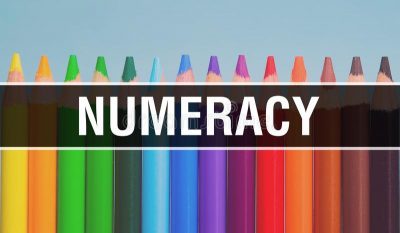
Numeracy Links
Mathematics is the first and only universal language that can be understood by all, in some way. Whether it is simple adding, measuring a room or identifying different shapes, every person in the world can relate to math. Teaching math, however, is not simple. Not only are there a number of processes to consider, there are a number of components that define the nature of mathematics which need to be integrated into any educational program of studies. While the processes tend to be similar – no matter the country, region, state or province – the way that the components are classified can differ. For this reason, the component names designated below are an effort to simplify the terms in the best way possible.
Math Processes
There are seven interrelated mathematical processes that students will encounter in any math program in order to achieve the goals of math education (and maybe even embrace lifelong learning in mathematics).
- Communication (C) – communicate to learn and express understanding
- Connections (CN) – make the connection of mathematical concepts to other ideas, teachings or everyday experiences
- Mental Math / Estimation (ME) – demonstrate the combined ability to estimate and mentally calculate math (various cognitive strategies to enhance flexible thinking and number sense)
- Problem Solving (PS) – apply new understanding by demonstrating how to solve math problems
- Reasoning (R) – develop and interpret critical thinking in math
- Technology (T) – choose and adopt technologies as tools for learning and problem solving
- Visualization (V) – develop skills to visualize and process information, make connections and problem solve
Math Concepts
Math concepts will fall under a set of strands (a major area of knowledge and skills into which the curriculum for mathematics is organized) devised by the governing authority for K – 8 education. The math strands for grades 9 – 12 will be organized slightly different as more difficult math (calculus, trigonometry, etc.) is introduced. How the math strands are laid out for Kindergarten to Grade 8 (or Key Stage 1 and 2) will depend on where you live.
For example:
- Canada (Ontario) – Number Sense & Numeration, Measurement, Geometry & Spatial Sense, Patterning & Algebra and Data Management & Probability
- United States Common Core Standards – Operations & Algebraic Thinking, Number & Operations in Base Ten, Number & Operations – Fractions, Measurement & Data and Geometry
- United Kingom (England) – Number, Measurement, Geometry and Statstics (Ratio & Proportion and Algebra are added on in Year 6)
- Austraila – Number & Algebra, Measurement & Geometry and Statistics & Probability
There is a nice selection of websites dealing with general numeracy across all the math strands. Some are free, others provide a free limited option and then there are the subscription websites that may provide a free trial. The list has been put in alphabetical order below.
General Math Websites
In an effort to make it as simple as possible for educators and parents to find the desired information, no matter what country you are from, this site will organize the math strands for Kindergarten to Grade 12 into:
- Number Sense – a general understanding of numbers and numeration
- Patterns & Algebraic Thinking – Patterning involves analyzing and making predictions using patterns in shapes, designs, and movement, as well as in sets of numbers. Algebra demonstrates the concept of equality using numbers and variables to represent equal quantities by developing techniques for solving equations
- Shape & Space – This strand involves identifying and describing shapes, sizes, positions, direction and movement. Measurement is used to determine many things, including the height, length, and width of objects as well as the perimeter, area and volume. Geometry is about shapes and their properties, Spatial sense is developed by visualising, drawing and comparing shapes and figures in various ways
- Statistics & Probability – Statistics involves learning about different ways to gather, organize, interpret and display data. Many events cannot be predicted with total certainty. Probability examines numerical descriptions of how likely an event is to occur or how likely a proposition is true
The current curriculum is evolving as education professionals and governments start to realize that there are additional concepts that should be learned in the classroom but may not have formally included it yet. The overall concensus, from professionals, is that Financial Literacy, Coding and STEM activities should begin at the elementary level. For that purpose, they have been given their own sections as government officials continue to work out where they should be incorporated into the curriculum.
- Financial Literacy
- Coding
- STEM Activities
Also not included in the strands above are Mental Math, Word Problems, Math Games and Parents Section since they cannot legitimally fall into any one category and are important for all strands.
- Mental Math (a group of skills that allow people to do math “in their head” without using pencil and paper or a calculator)
- Word Problems (a few sentences describing a ‘real-life’ scenario where a problem needs to be solved by way of a mathematical calculation.)
- Math Games (online educational games to practice math skills across all strands)
- Parents Section (websites for math with parents in mind)

